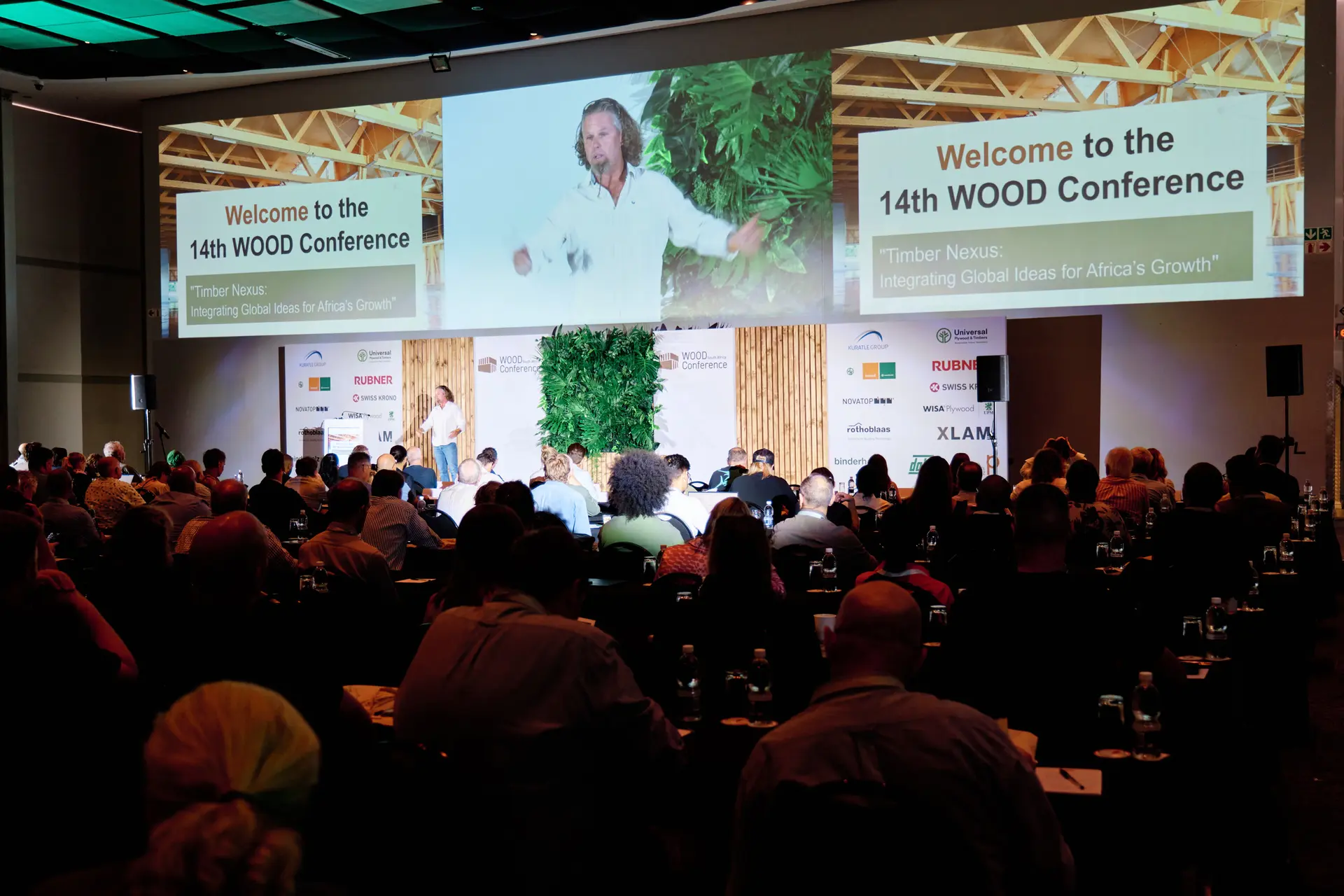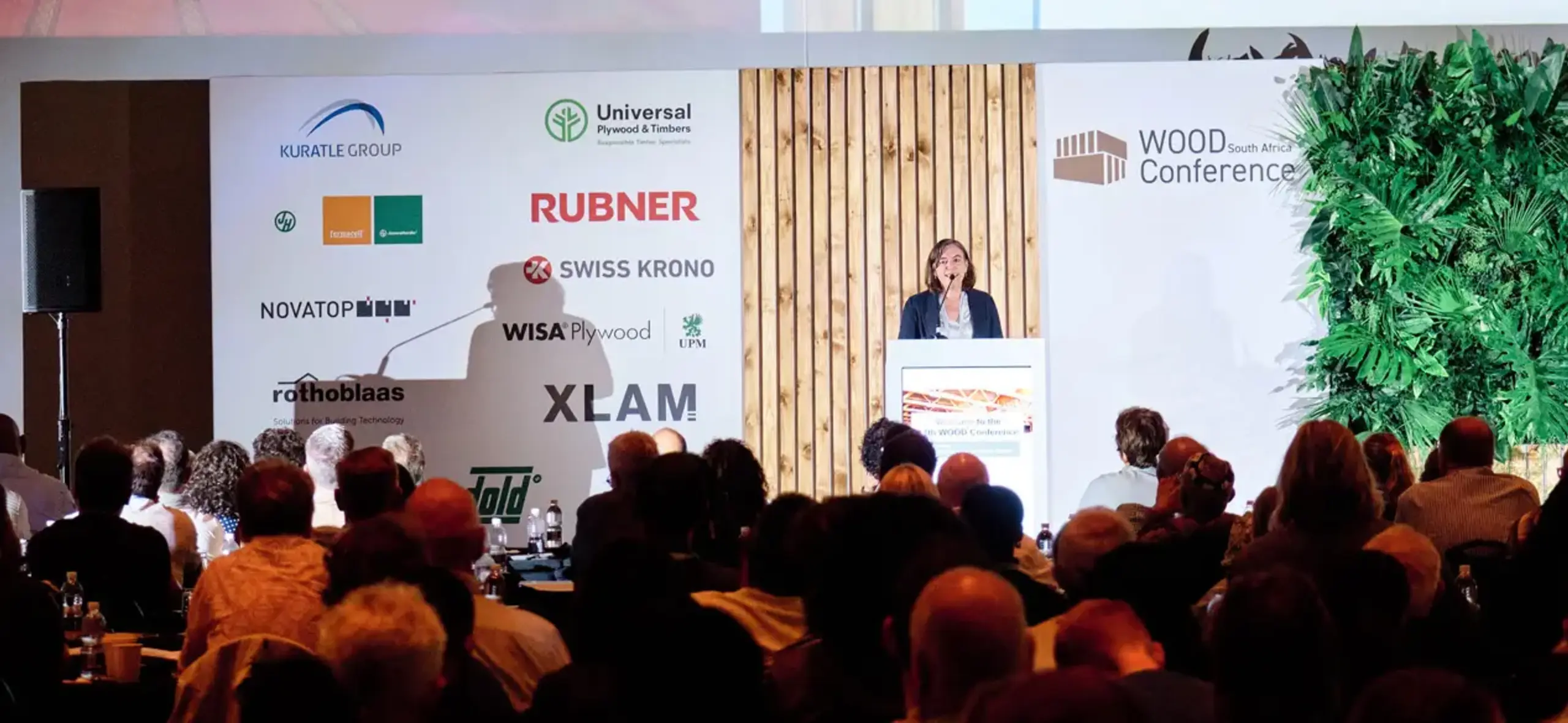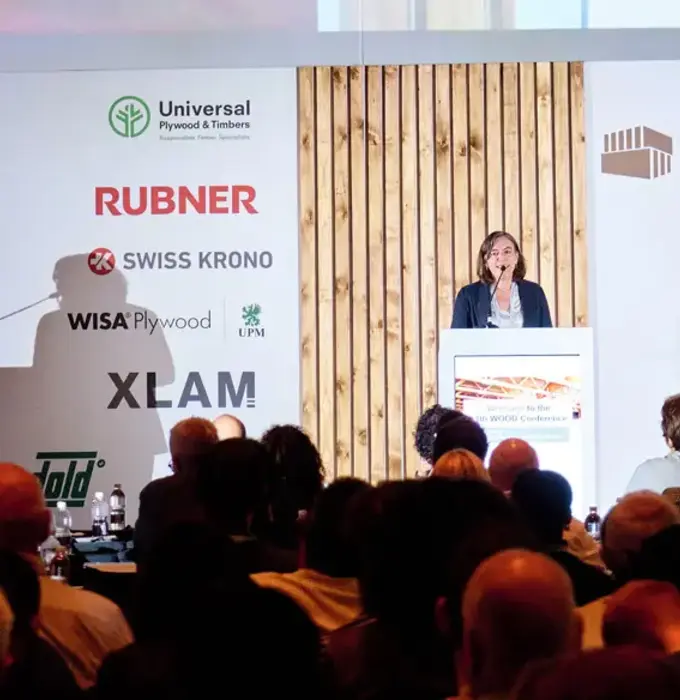14th Annual Wood Conference in Cape Town:
The speakers presented and explained building and civil construction projects using innovative engineered timber in modular, free-form, structural and natural applications.
A conference organiser, Zaida Davids, said the hybrid conference format attracted almost 550 in-person attendees and an additional 256 online. They enjoyed networking opportunities, learning from timber experts, the exhibits and the traditional Swiss chocolate treat in the goody bag.
The master of ceremonies, Hannu Garny, reflected on the conference's evolution over the past 14 years. He said there were few South African speakers initially because local architects and engineers did not think beyond using timber for roof trusses, mouldings, joinery, furniture, decking, occasionally laminated beams and timber-frame homes, and general construction purposes.
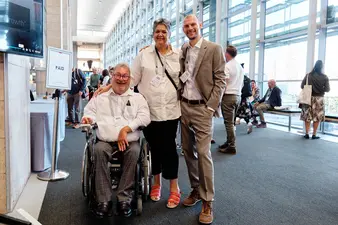
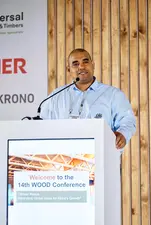
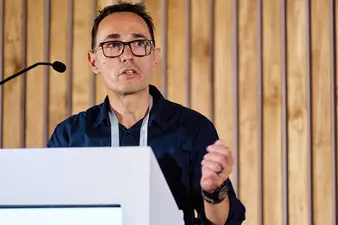
Over the years, the trend has gradually shifted, with this year's conference featuring eight South African speakers, excluding a group of UCT architectural honours year students, alongside three from Switzerland and one from Sweden with strong South African ties.
The Wood Conference was initiated by George Kuratle while visiting South Africa and seeing the potential for expanding the market for timber construction. For 14 years, the Kuratle family has continued to foster connections between timber professionals from the global North and South.
When George retired, his son, Roger Kuratle, stepped up and continued the family's commitment to bridging geographic and professional divides. In his opening address, Roger said, "By integrating expertise from across continents, learning from established timber markets like Europe, North America, and Australia, and adapting solutions to local African contexts, we can create a new model for sustainable urbanisation". Before the formal proceedings began, Alderman Eddie Andrews, the Deputy Mayor of Cape Town, made a surprise appearance. He thanked the Kuratle group and posed a thought-provoking question to the audience: "What type of city do you want to build and grow?" He urged architects and engineers to "push the envelope in urban development and envision a future where timber plays a central role in sustainable building practices".
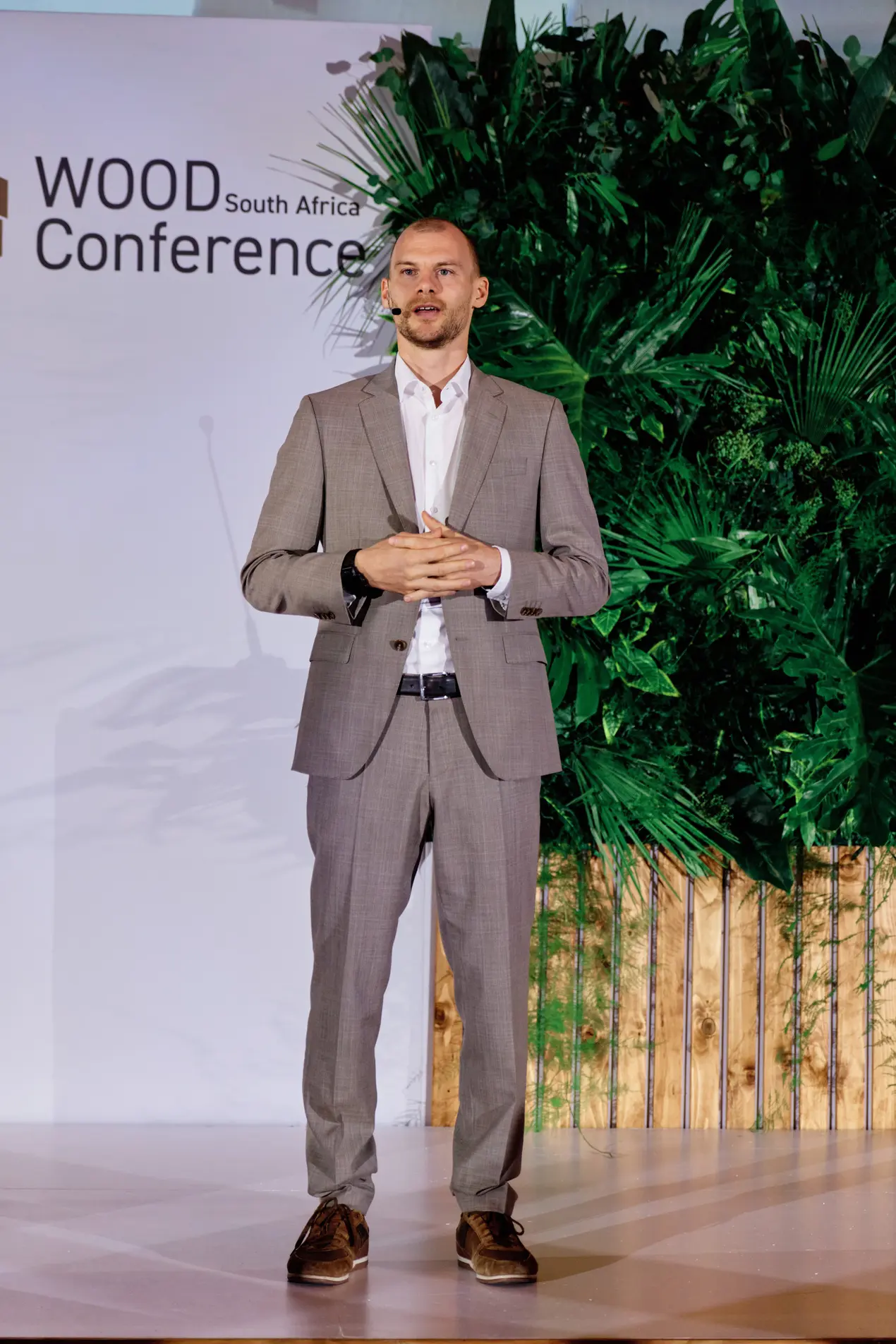
Ambassador Mirko Manzoni, the Swiss Ambassador to South Africa, officially opened the conference and highlighted the importance of international cooperation in advancing the timber industry.
Johann van der Merwe
The first speaker was Dr Johann van der Merwe, a senior lecturer and researcher at the University of Pretoria (UP). He addressed a vital misperception about the quality of SA's graded structural timber caused by the misalignment of local design standards and Eurocode 5. He said rigorous tests by the university and its partners indicate that locally produced soft and hardwoods suit structural applications.
"For a construction sector serious about reducing the embodied carbon of building structures, this research supports the increased use of local timber for structural applications, reducing reliance on imported materials", Johann explained.
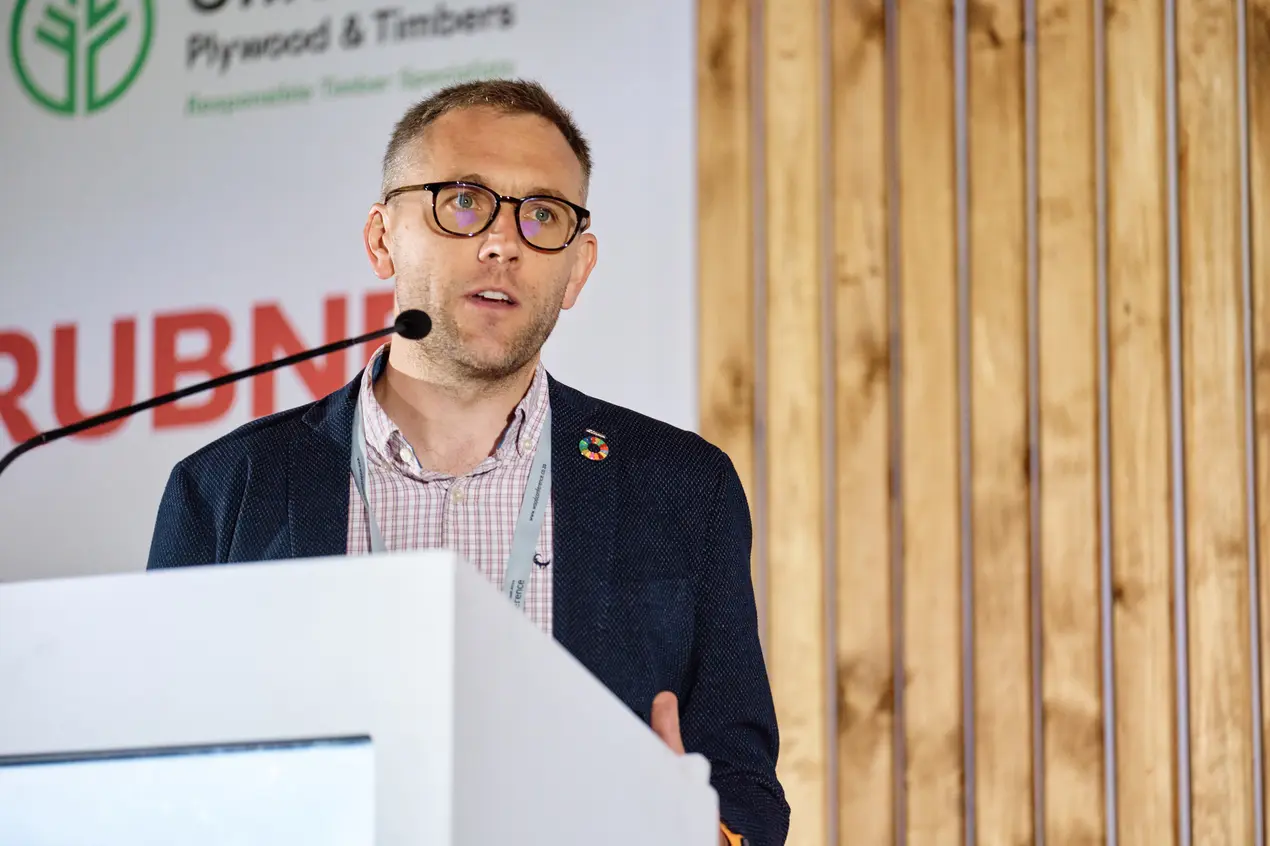
Nick Plewman
Cape Town-based Nick Plewman of Nicholas Plewman Architects + Associates described how laminated timber lends authenticity to the environment and location when designing and building lodges in areas like the Okavango Delta, Bisate in Rwanda and the Soutpansberg.
"When you design structures for sensitive landscapes, you must immerse yourself in that environment, think outside the box and consider how to incorporate timber in organic forms". While "timber allows us to do amazing things", Nick said the objective should also be to build for impermanence. "The buildings will become the compost of the future".
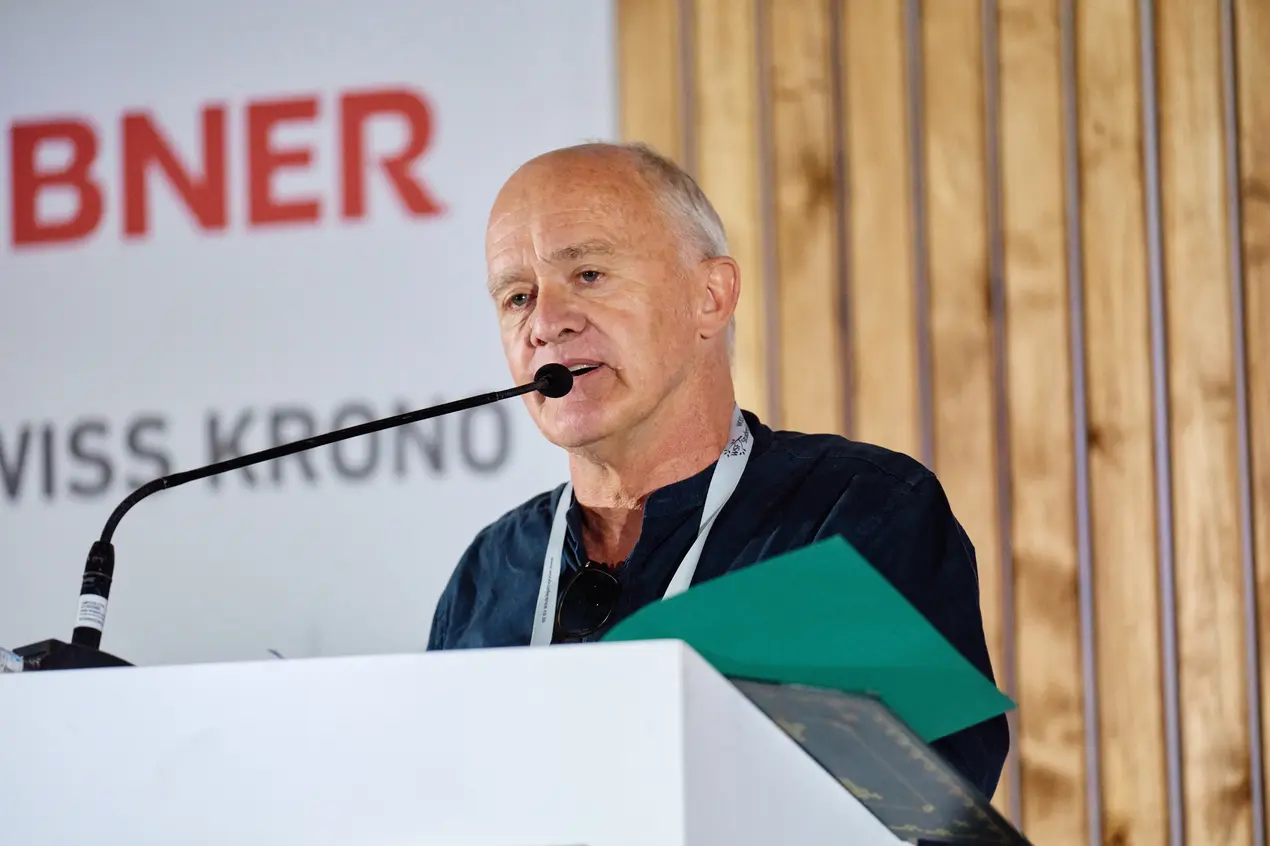
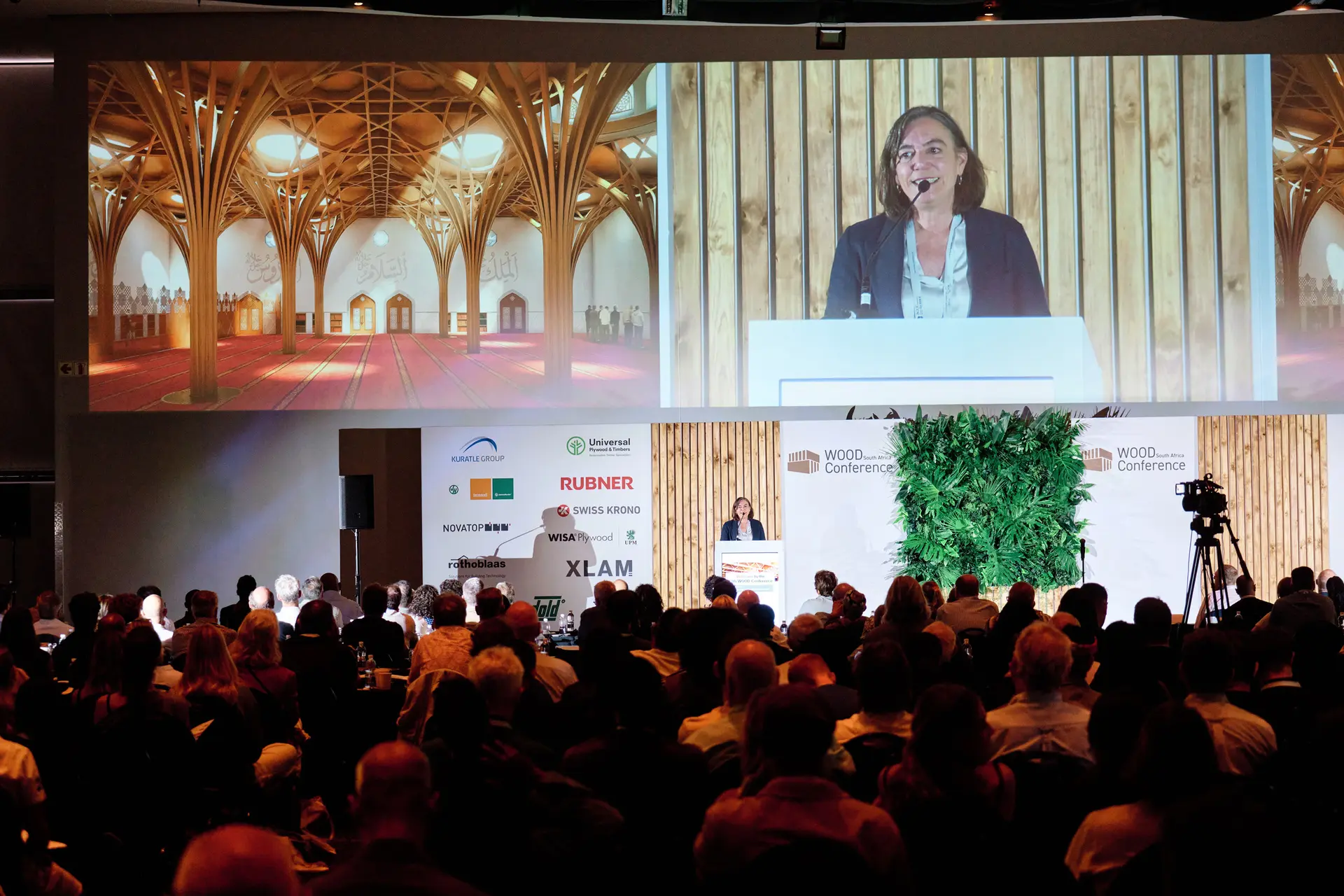
Katharina Lehmann
Katharina Lehmann, CEO of Blumer Lehmann, described some of the award-winning free-form structures manufactured by the company. She explained how parametric design makes it possible to organise timber elements into different types based on their shape, size and connections.
For example, Katharina said their manufacturing plants produced the 3,000 free-form components, the ribbed, timber-frame components and cross-laminated timber (CLT) elements for the 2340 square metres Cambridge Mosque. It includes 30 tree-like structures that are double-curved with specialised connections.
"Our success is based on product, process and people. People are the most important because they need to be inspired and prepared to push global boundaries", she commented. The company employs 550 people in its sawmilling and timber construction factories.
Belinda Duncan
Belinda Duncan, founder and director of Terraverta Habitats, described her journey from working as an IT and financial specialist in a dull office with a pot plant to establishing a company focusing on strategic design in the built environment.
Belinda described how the biophilic effect of living in a mass timber home is part of the strategic design that integrates sustainability and supports the environment while enhancing human well-being. In conclusion, she said, "It is about nature in space and the nature of the space. We need to change the narrative of traditional building systems and position mass timber as a key player in Africa's urban future".
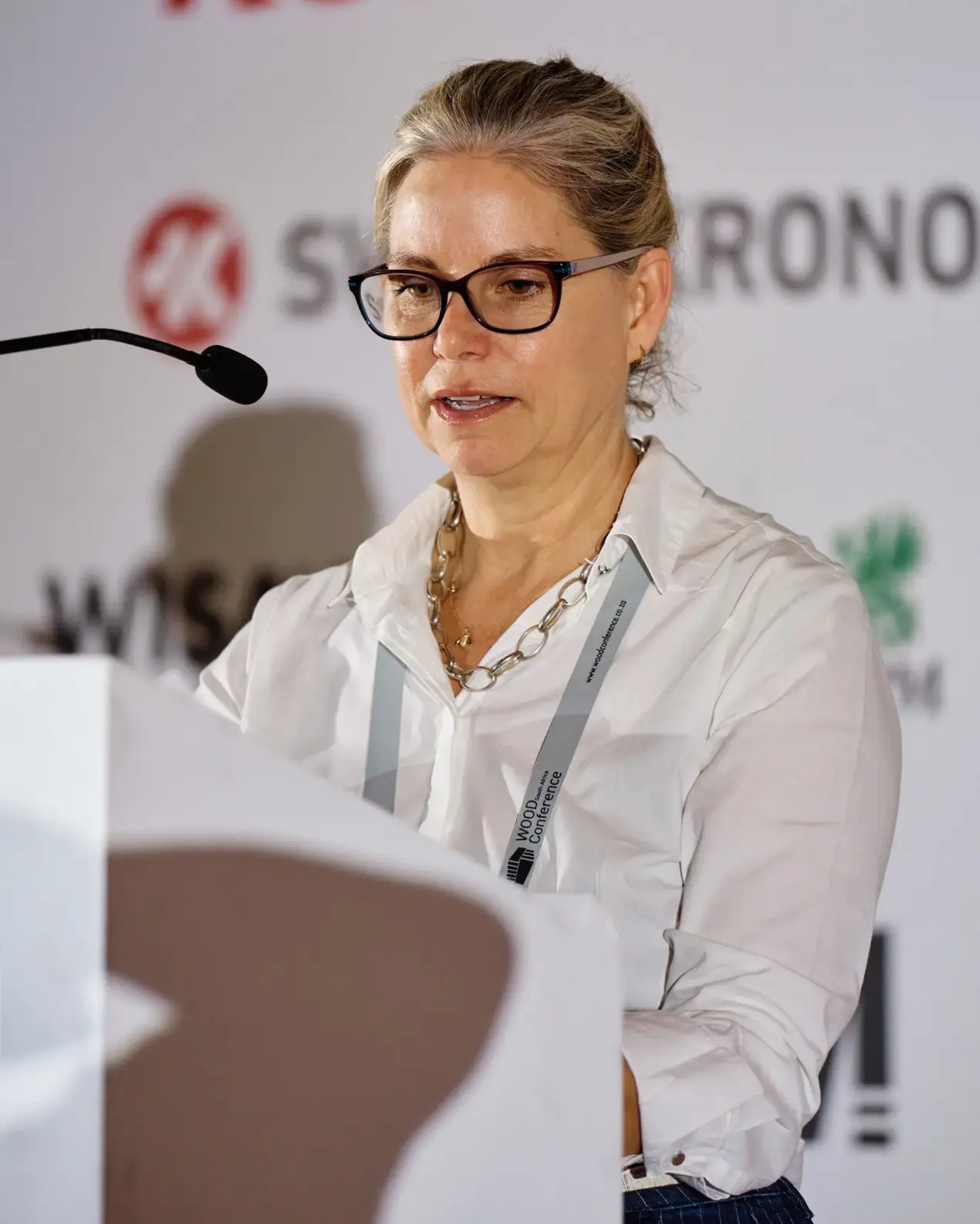
Christoph Meier
Christoph Meier of SJB Kempter Fitze in Switzerland said he started as a steel and concrete engineer but has now embraced the "wood virus". He said the pros of building with engineered timber outweigh the cons.
"Timber is durable and fire resistant, and I advise all professionals to accept wood as the building material of this century", he said, acknowledging that "the cost of timber construction is always an issue". Christoph noted that the aesthetic, climate-resistant properties of timber structures and the speed of manufacturing and building must be considered.
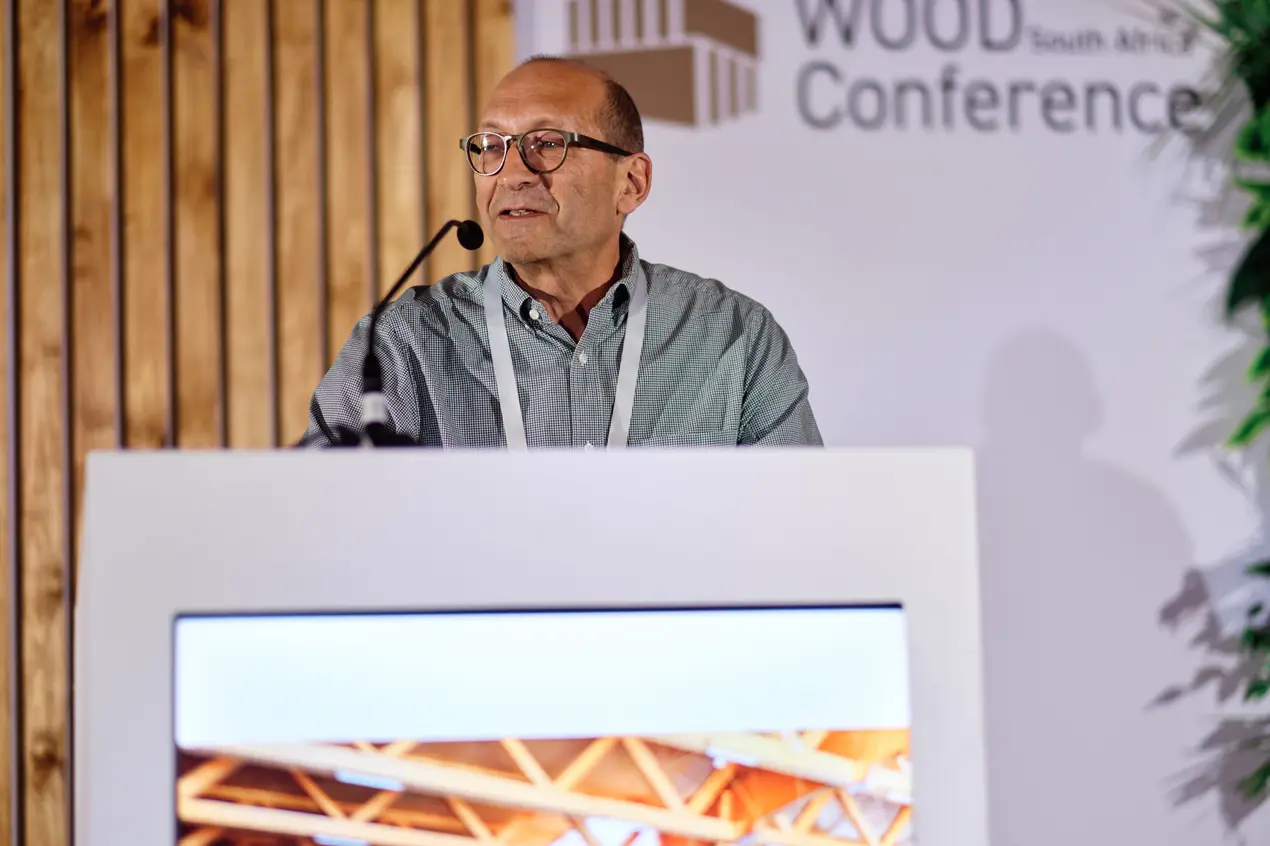
Shawn Scriven
Shawn Scriven, Principal and founding member of Fuse Architects, spoke about CLT and sustainable architecture. He explained that accusations of "greenwashing" of mass timber buildings are based on a myth. Bolting on solar panels and other "environmentally friendly" appliances is not enough. Traditional materials like bricks, steel, aluminium and concrete are responsible for 40% of the global greenhouse gas emissions.
Shawn explained that the market and regulators are stuck in the past, causing supply chain bottlenecks. "Timber is a reality check for the future of construction. It requires a shift of mindset", he said. "We must communicate with and educate developers and clients to adapt and change.
"The question should not be about cost. It should be 'what is the smartest way to build for this and the next generations?'. We need to shift the narrative from cost to value".
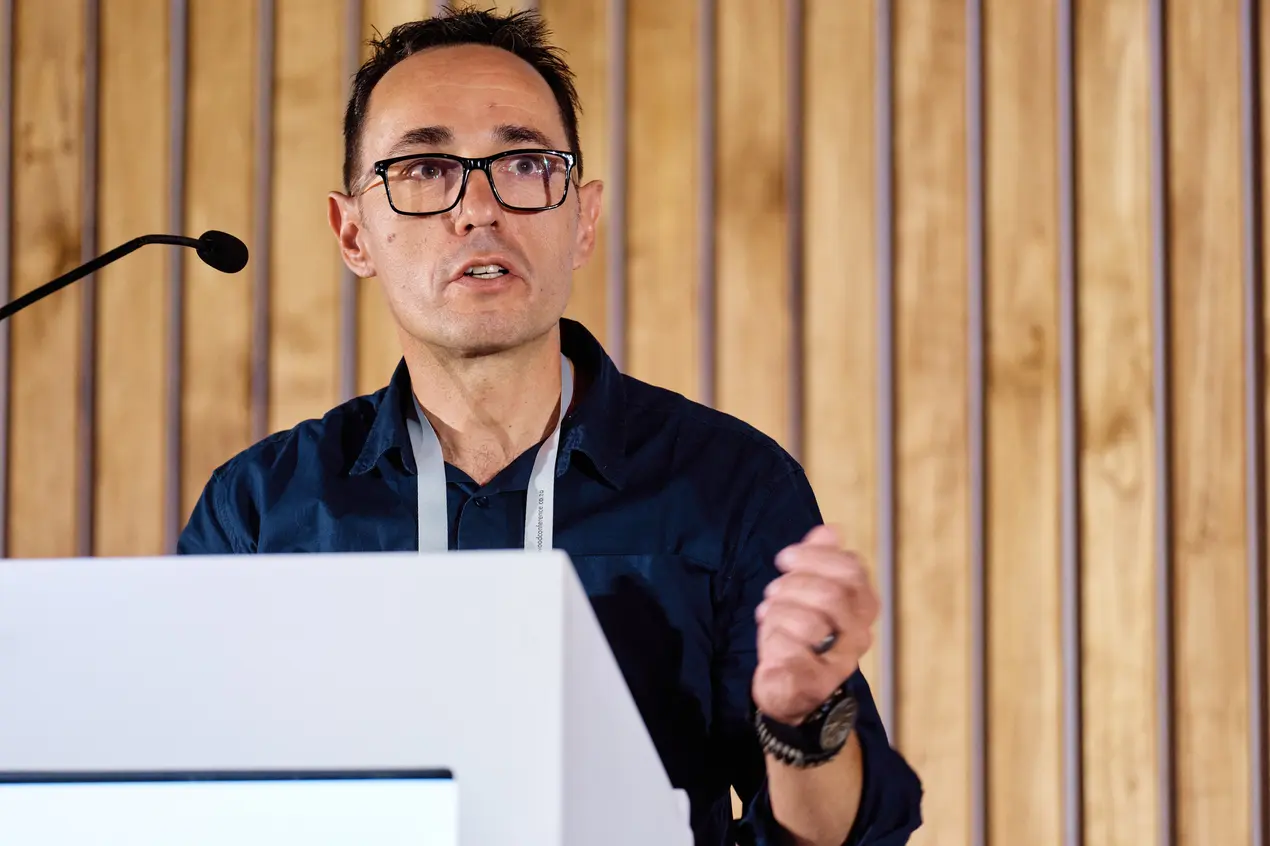
Hannu Garny
Hannu Garny described how he designed and built a CLT home in Stellenbosch in 2014. "It isn't difficult to build. Think about it as a big cupboard consisting of components assembled with simple tools. It doesn't have to be expensive, and the longest it has taken me to put up a house is five days," he said.
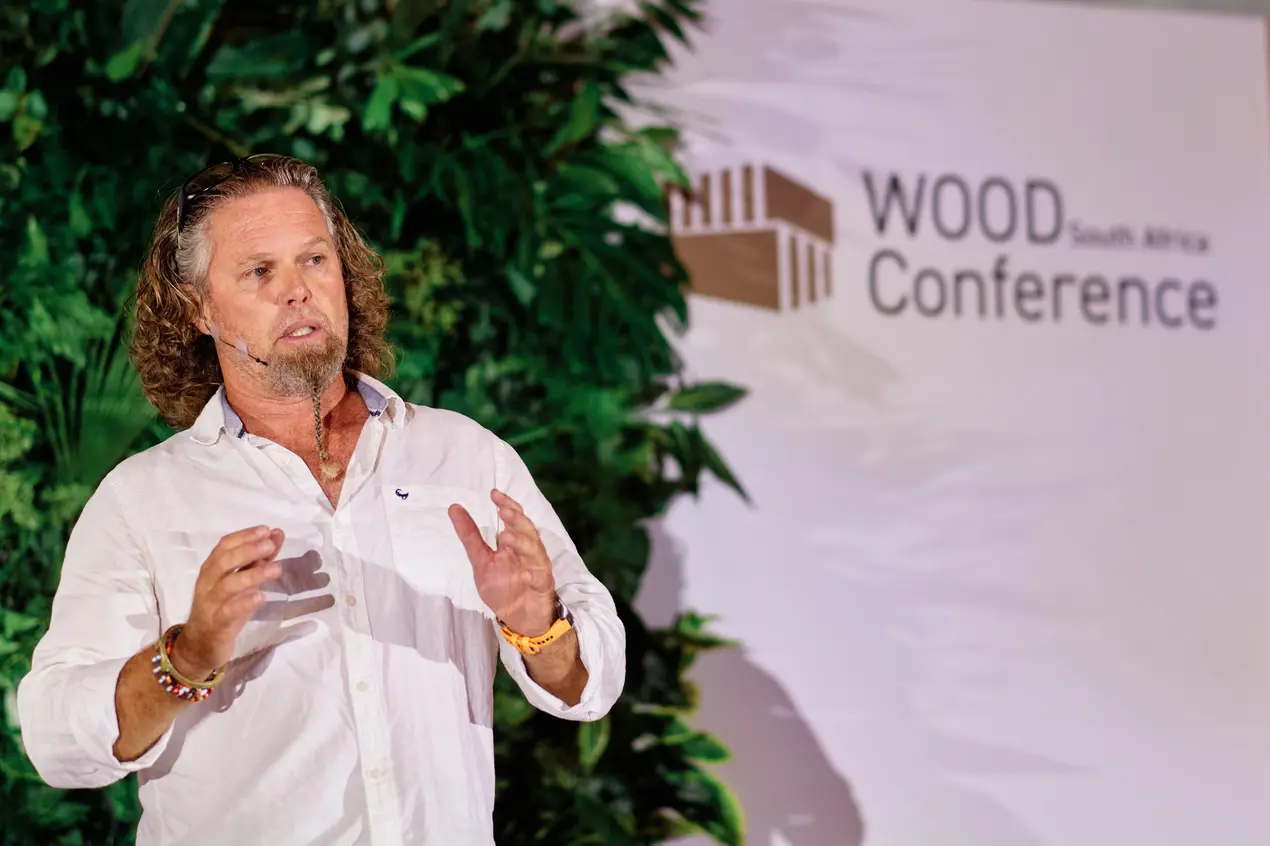
Kyle Bennett
The first CLT manufacturing plant in South Africa was established by XLam in Cape Town. XLam's project director, Kyle Bennett, compared CLT's environmental strength and efficiency with steel and brick building materials.
He explained that although building with timber could be more expensive, the strength, lightness, design, prefabrication and installation efficiencies are cost savers. The material is far superior when considering environmental impacts and construction carbon emissions.
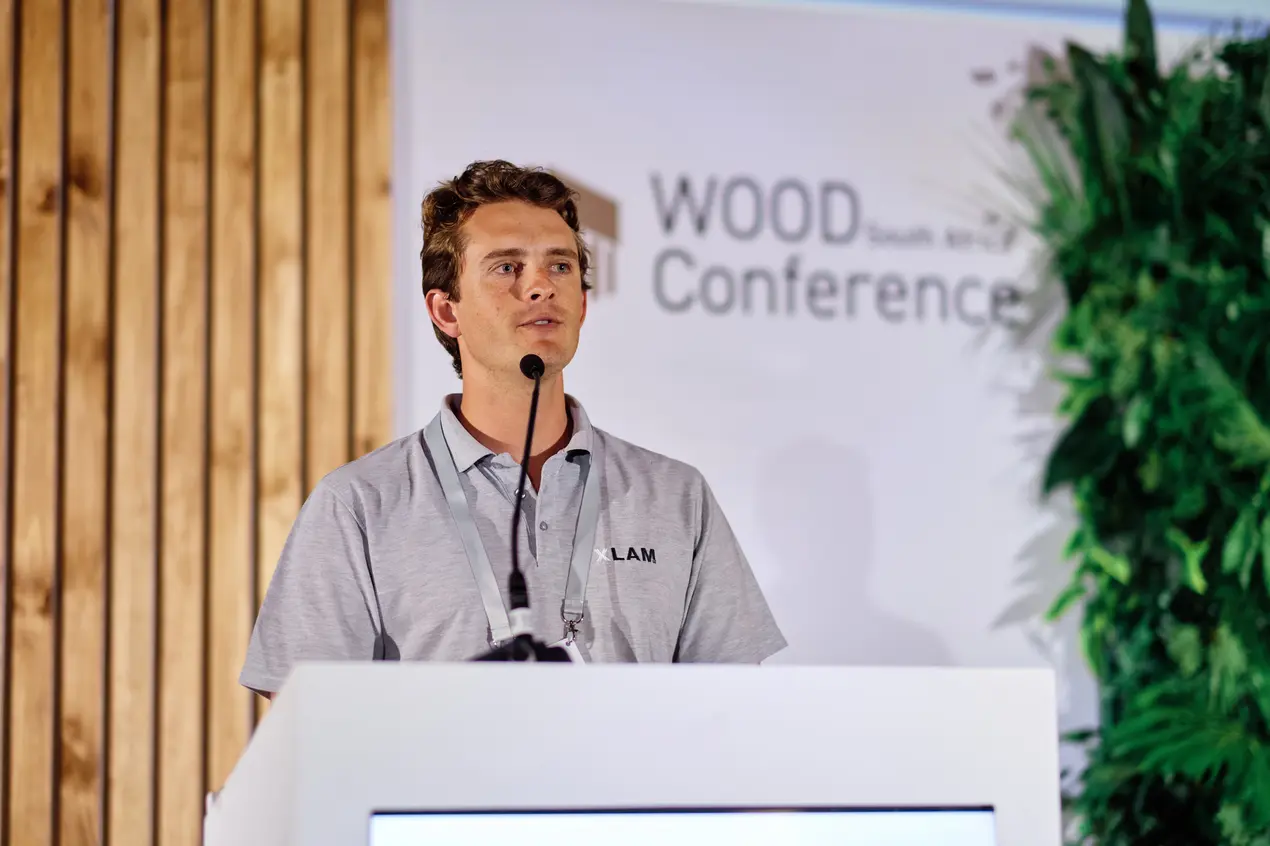
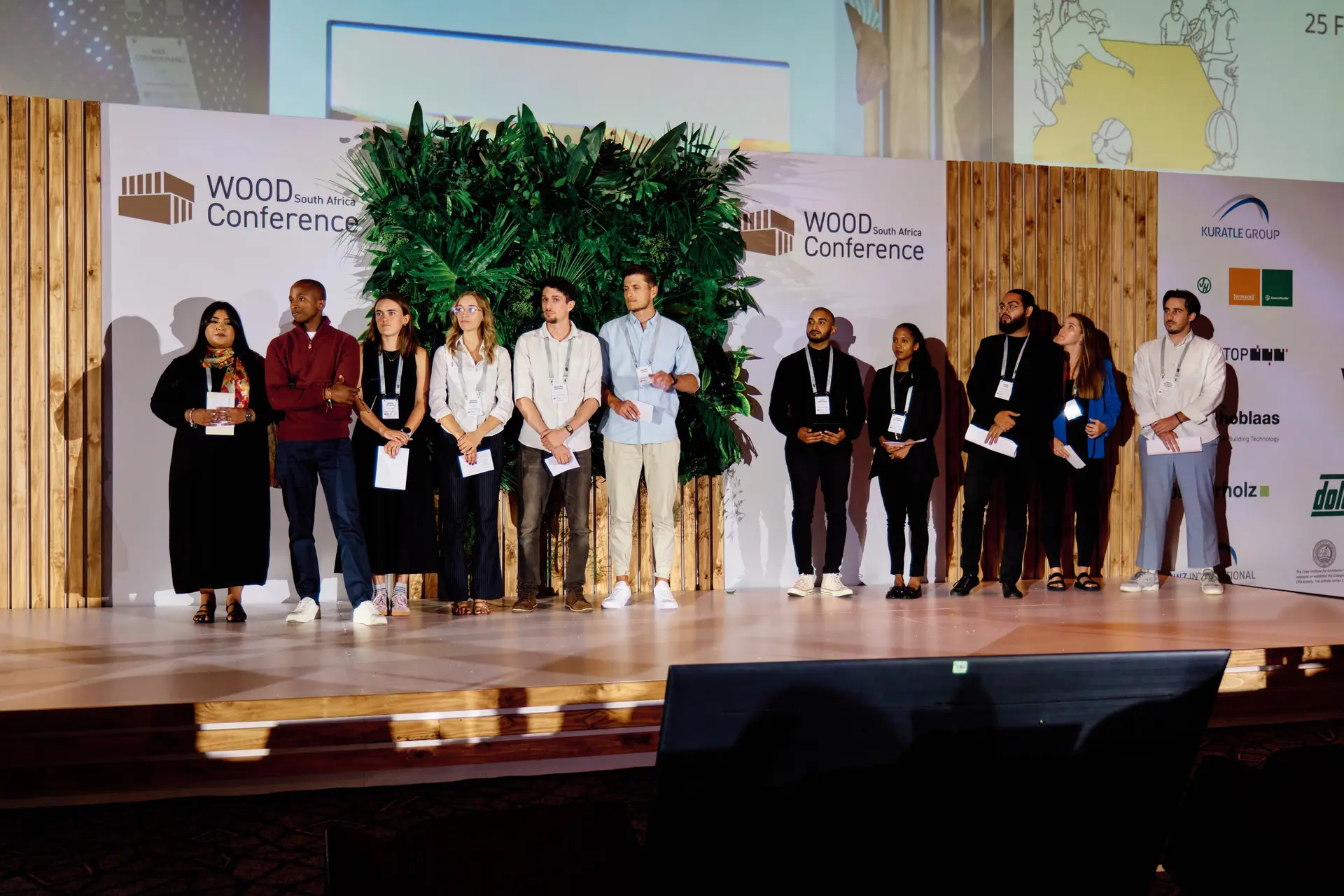
UCT Honours students
Four groups of UCT honours architecture students presented their methodologies and designs for upgrading the Baphumelele Orphanage in Khayelitsha in Cape Town. They integrated sustainable building practices with community-centred approaches to demonstrate how timber can be used to address real-world challenges in innovative ways.
Abrie Visagie
"Timber, technology and tradition" was the topic of Abrie Visagie's presentation. He is the Technical Director of JNA Group, where the timber division specialises in unique construction projects, often in remote local and cross-border locations. He presented the Lapalala reserve and Klipspringer projects in Limpopo Province and Soetmelksvlei and their contribution to restoring the burned Mostert's Mill in the Western Cape.
Abrie cautioned that "not everything overseas can be produced in Southern Africa. "We must embrace local resources, affordable technologies and skilled labour without compromising our rich natural and cultural heritage".
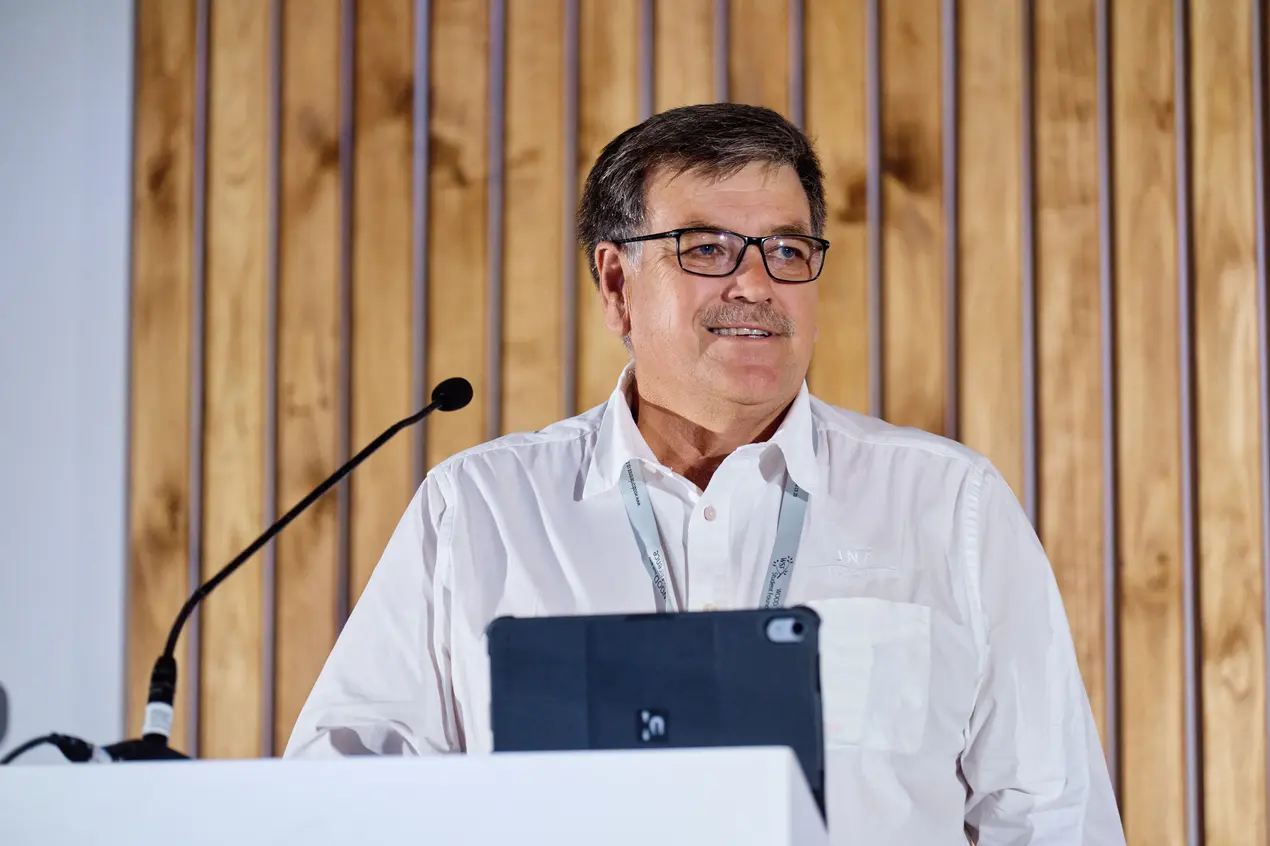
Braam de Villiers
"The fourth revolution is here. Timber is the material for revolutionary change" was the topic of Braam de Villiers' input. As the co-founder of Earthworld Architects and Interiors, Braam's journey began with steel and concrete because his lecturer 30 years ago said timber is only for trusses, cupboards and other joinery.
He is now a convert, and they integrate the 4th industrial revolution's digital tools, such as parametric modelling, BIM, and CNC machines, into their work. Depending on the size of the project, premanufacturing lets them assemble buildings in six to eight weeks, from start to finish. Notable projects in Pretoria are the Lucky Bread Cafe in Menlyn and UP's Future Africa conference hub.
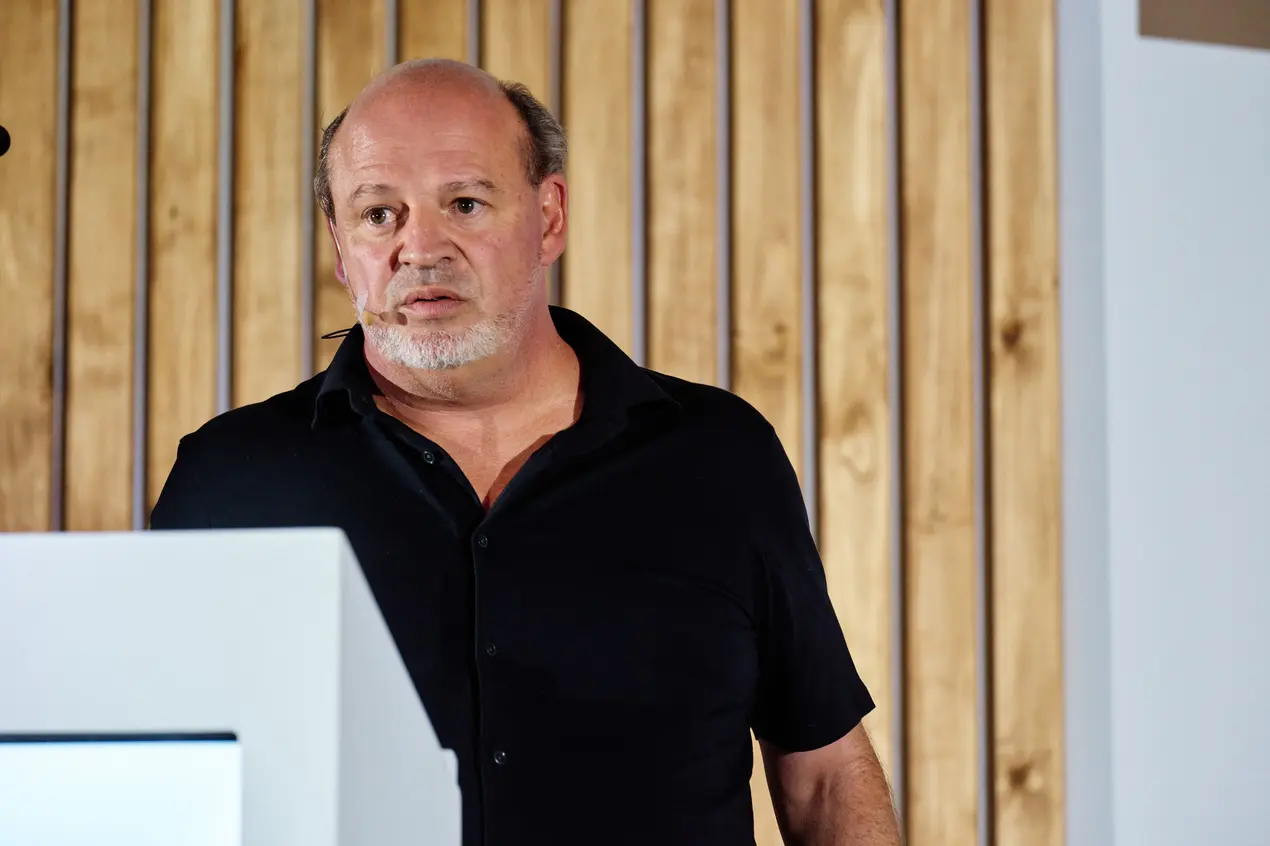
James Brown
Prof James Brown of Umeå University, Sweden, explained research that confirms that exposing first-year architecture students to hands-on timber construction provides "actionable knowledge on incorporating wood into design and construction".
James said wood is an accessible material that is light enough for two students to carry and scale into actual structures. It is also a forgiving material that supports architectural education by rationalising craft-based technologies with modern digital tools in the timber value chain.
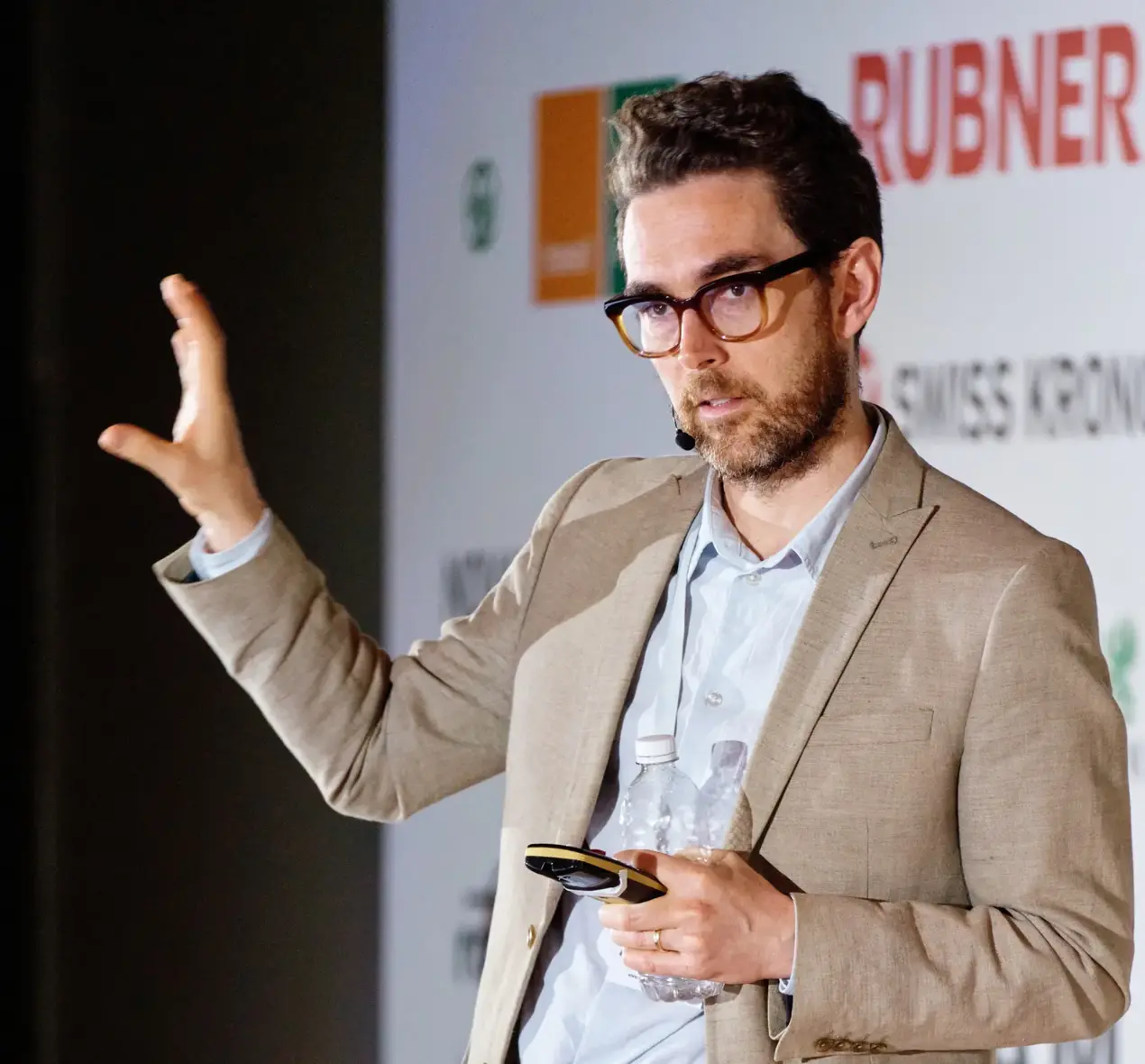
Bettina Franke
The final speaker was Dr Bettina Franke, Head of Research and Marketing at Timbagroup in Switzerland. She intrigued the audience with a new perspective on engineered structural timber. Only 3% of Switzerland's over 40,000 bridges are built with wood.
Bettina presented an overview of feasibility assessments by interdisciplinary researchers to "develop heavy-duty timber bridges that revolutionise timber construction and provide a sustainable, efficient and aesthetically pleasing alternative to steel and concrete".
Bettina described the significance of moisture content on timber bridges and using state-of-the-art technologies like parametric modelling and advanced manufacturing processes to determine the practicality of reinforcing CLT and glulam to achieve the structural performance required for high loads, long spans and durability.

Roger Kuratle
Roger Kuratle thanked everyone and stressed the importance of continuing the nexus framework of dialogue and collaboration initiated at the conference.
"The Kuratle Group believes in a globally connected timber sector where industry leaders, architects, engineers and policymakers come together to create real solutions for real challenges.
"Our commitment is not just about selling products or expanding markets. It is about ensuring that timber becomes a fundamental pillar in Africa's urban development, adapted to local needs, driven by local expertise and supported by global innovation", Roger concluded.
Background
The 14th Wood Conference held on 25 February 2025 was presented by the Kuratle Group and Universal Plywood.
The annual Wood Conference is a knowledge-based platform connecting architects, engineers, quantity surveyors, project managers, wood scientists, developers, investors and architectural students at the forefront of timber innovations.
The Cape Institute for Architecture has assessed and validated the Wood Conference as a Category One CPD activity. It carries 1.0 CPD credits.
This year’s main sponsors were Novatop, Rothoblaas, Dold, Pröbstl Holz, Swiss Krono, Wisa Plywood, XLAM and Binderholz. The event was co-sponsored by HWZ International, the Wood Student Foundation and Scorpio Safaris.
